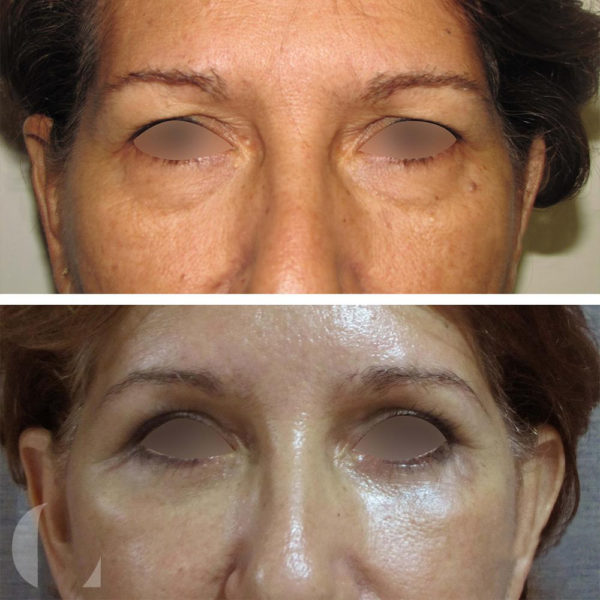Blepharoplasty Overview
Blepharoplasty, commonly referred to as eyelid surgery, repairs sagging skin above and below the eyes. With age, the eylids stretch, and the muscles supporting them weaken. As a result, excess fat often gathers above and below the eyelids, causing sagging eyebrows, droopy upper lids and bags under the eyes. During a belpharoplasty, an incision is made along the fold of the upper eyelid, removing excess skin, muscle and possibly fat. On the lower lid, an incision is made just below the lashes in the eye’s natural crease or inside the lower lid.
Excess fat, muscle and sagging skin are then removed or redistributed. The scars tend to be imperceptible after a few months. Some patients have fat pockets below the lower eyelids, without sagging skin. In these cases, transconjunctival blepharoplasty may be the best option, during which the removal of fat from the bags is done through an incision inside the lower eyelid, without leaving external scars. Request more info today!
Anesthesia
During the Blepharoplasty procedure, anesthesia may be general or intravenous sedation in combination with local anesthesia in the area being treated.
Surgery Duration
The surgical procedure takes place over an average period of 90 minutes. If necessary, this period may be extended. However, the surgical procedure time should not be confused with the amount of time the patient will be in the operating room. That amount of time will also include the administering of anesthesia and postoperative recovery.
Hospitalization Period
Under normal circumstances, the hospitalization period is approximately a few hours, up to 1 day.
Postoperative Care
Patients undergoing blepharoplasty should rest for 7 days following the procedure, always keeping their head elevated. It is important to keep cold compresses on the eyes for 48 hours after surgery. This can be done with cold wash cloths and a basin of ice water. Do not use an ice bag.
Wash cloths should be changed every 40 minutes through the first night to keep them moist and cool. During the first few days, there may be lacrimation, discomfort around the eyes, a sensation of light burning and visual obscuration. These symptoms are normal and can be alleviated with the use of appropriate eye drops. Patients should sleep on their backside (face up) with their head elevated for 2 weeks following surgery. Strenuous activity and exercise should be avoided for 1 month.
